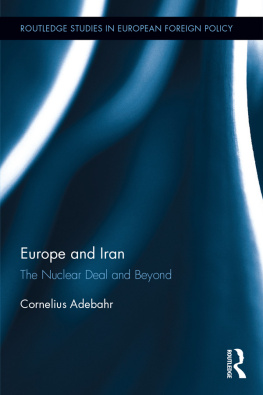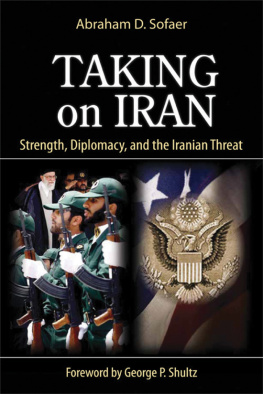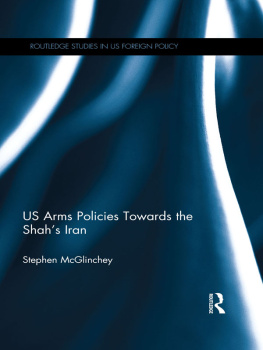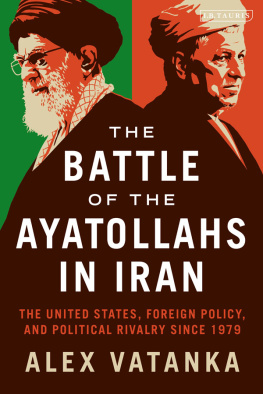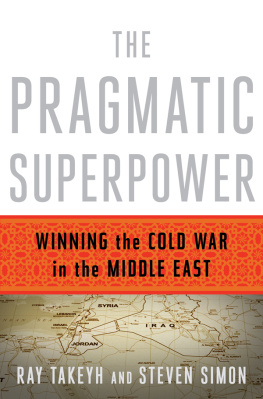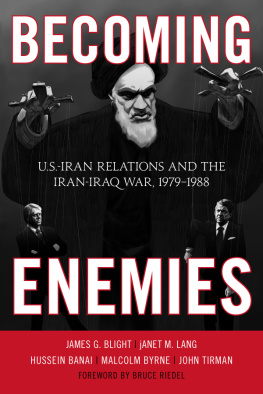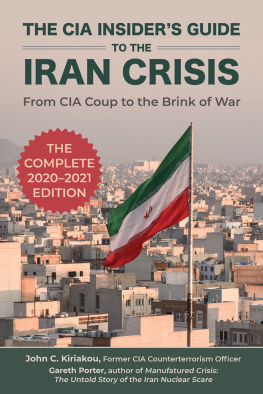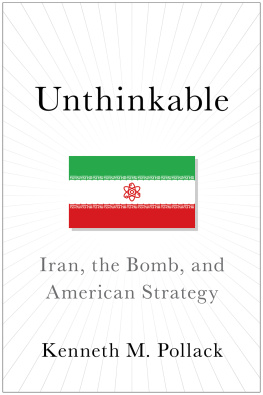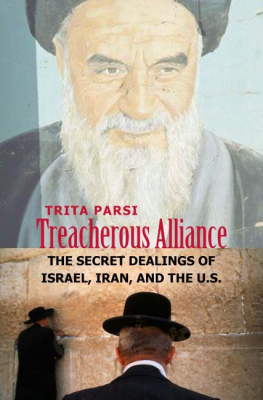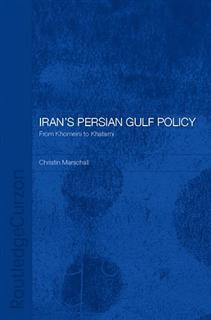REVOLUTIONARY IRAN AND THE UNITED STATES
US Foreign Policy and Conflict in the Islamic World
Series Editor
Tom Lansford
University of Southern Mississippi, USA
The proliferation of an anti-US ideology among radicalized Islamic groups has emerged as one of the most significant security concerns for the United States and contemporary global relations in the wake of the end of the Cold War. The terrorist attacks of September 11, 2001 demonstrated the danger posed by Islamic extremists to US domestic and foreign interests. Through a wealth of case studies this new series examines the role that US foreign policy has played in exacerbating or ameliorating hostilities among and within Muslim nations as a means of exploring the rise in tension between some Islamic groups and the West. The series provides an interdisciplinary framework of analysis which, transcending traditional, narrow modes of inquiry, permits a comprehensive examination of US foreign policy in the context of the Islamic world.
Other titles in the series
Great Powers and Regional Orders
The United States and the Persian Gulf
Edited by Markus Kaim
ISBN 978-0-7546-7197-8
Fostering Fundamentalism
Terrorism, Democracy and American Engagement in Central Asia
Matthew Crosston
ISBN 978-0-7546-4632-7
US Foreign Policy and the Horn of Africa
Peter Woodward
ISBN 978-0-7546-3580-2
US-Pakistan Relationship
Soviet Invasion of Afghanistan
A.Z. Hilali
ISBN 978-0-7546-4220-6
Revolutionary Iran and the United States
Low-intensity Conflict in the Persian Gulf
JOSEPH J. ST. MARIE
University of Southern Mississippi, USA
SHAHDAD NAGHSHPOUR
University of Southern Mississippi, USA
ASHGATE
Joseph J. St. Marie and Shahdad Naghshpour 2011
All rights reserved. No part of this publication may be reproduced, stored in a retrieval system or transmitted in any form or by any means, electronic, mechanical, photocopying, recording or otherwise without the prior permission of the publisher.
Joseph J. St. Marie and Shahdad Naghshpour have asserted their right under the Copyright, Designs and Patents Act, 1988, to be identified as the authors of this work.
Published by
Ashgate Publishing Limited
Wey Court East
Union Road
Farnham
Surrey, GU9 7PT
England
Ashgate Publishing Company
Suite 420
101 Cherry Street
Burlington
VT 05401-4405
USA
www.ashgate.com
British Library Cataloguing in Publication Data
St Marie, Joseph J.
Revolutionary Iran and the United States : Low-intensity Conflict in the Persian Gulf. (US Foreign Policy and Conflict in the Islamic World)
1. Iran Foreign relations United States. 2. United States Foreign relations Iran. 3. Iran Foreign economic relations United States. 4. United States Foreign economic relations Iran. 5. Iran History Revolution, 1979Influence. 6. Low-intensity conflicts (Military science) Persian Gulf Region History.
I. Title II. Series III. Naghshpour, Shahdad.
327.55073-dc22
Library of Congress Cataloging-in-Publication Data
St. Marie, Joseph J.
Revolutionary Iran and the United States: Low-intensity Conflict in the Persian Gulf / by Joseph J. St. Marie and Shahdad Naghshpour.
p. cm. (US Foreign Policy and Conflict in the Islamic World)
Includes index.
1. United States Foreign relations Iran. 2. Iran Foreign relations United States. 3. Low intensity conflicts (Military science) Persian Gulf. I. Naghshpour, Shahdad.
II. Title.
JZ1480.A57I718 2011
327.73055dc22
2010048958
ISBN 9780754676706 (hbk)
ISBN 9781409427223 (ebk)
ISBN 9781409489375 (ebk-ePUB)

Printed and bound in Great Britain by TJ International Ltd, Padstow, Cornwall.
We dedicate this work to the memory of our parents: John H. & Josephine St. Marie Ali & Azam Naghshpour
Contents
Acknowledgements
Great thanks go two of our graduate students Mr. Rian Plaswirth and Mr. Jim Kierulff who provided helpful assistance.
Chapter 1
Low-Intensity Conflict and Fourth Generation Warfare
The relationship between the Islamic Republic of Iran and the United States is for all practical purposes a non-relationship with each nation pursuing adversarial and hostile policies and actions towards the other. The reality of the situation is that Iran and the United States are nations engaged in a low-intensity conflict. This work examines the low-intensity conflict between the United States and Iran, with respect to the military, economic, and political aspects in which the conflict has taken in the past thirty years.
This chapter investigates the relationship between The Islamic Republic of Iran and the United States of America before and after the 1979 Iranian Islamic Revolution with particular emphasis on the post-revolutionary war stages. The analysis examines the adversarial relationship, fourth generation warfare (political, economic and diplomatic war in the 21st. Century), and the theoretical constructs that surround this form of warfare between states. Furthermore, this chapter sets the stage for subsequent chapters by demonstrating how domestic politics and low-intensity warfare are linked. This linkage, we argue, determines the ebb and flow of the conflict.
The Adversarial Relationship
The effective date of this conflict can be pinpointed as 4 November 1979, when Iranian radical students seized the US embassy in Tehran, taking US diplomats and civilian workers hostage for 444 days. This action, which was tacitly sanctioned by Ayatollah Ruhollah Khomeini, produced a long lasting and significant change in US foreign policy toward Iran (Jordet nd, Pollack 2004, Quosh 2007). The diplomatic crisis was highlighted by the failed American rescue attempt of the hostages, which put each nation firmly in a confrontational state. Subsequent confrontations were manifested through moral or ideological struggles between two opposing ideologies pursued by means other than direct military confrontation.
Similar to Western political practice, the Islamic Republic has democratic institutions and constitutional checks and balances. However, these governmental characteristics are derived from Islamic law which is inherently undemocratic. For example, candidates for political office are required to submit their credentials to religious scholars before they are certified to stand for election (Abrahamian 2008, Thaler et al. 2010). The Constitution of the Islamic Republic is derived from Shia Islamic law, which in turn is derived from the Koran, the infallible word of God. The Islamic Republic has created a political system diametrically opposed to the American and Jeffersonian ideals of life, liberty, and the pursuit of happiness through the implementation of various social, economic, and political controls. The Iranian government sees the American constitution and political system as corrupt and devoid of the perquisite religious component, which they deem necessary for a just society. With such diverse ideological views there has been little common ground for compromise or co-existence. Those episodes of cooperation such as Arms for Hostages have tended to end badly. Even Iranian assistance in the defeat of the Taliban was short lived after Iran was made part of the Axis of Evil short of direct military conflict both have sought various means to demonstrate their ideological superiority within political and economic arenas.
Next page

